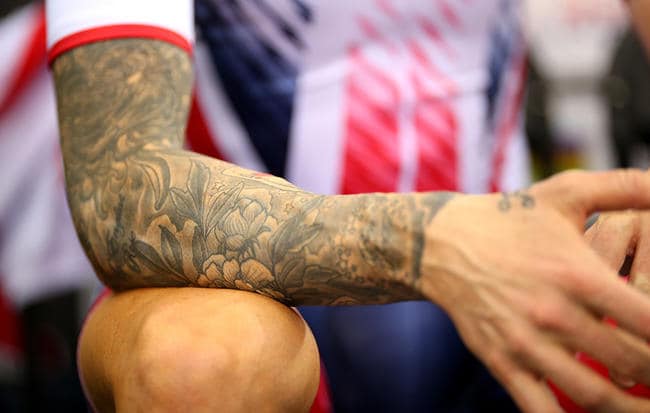Tattoos May Mess With Your Sweat Rate
Getting ink permanently damages your skin’s sweat glands, according to a new study.
Getting ink permanently damages your skin’s sweat glands, according to a new study. – By Selene Yeager

On average, the sweat rate from the tattooed skin was about half of the sweat rate from the non-inked skin. The tattooed skin was also “saltier” because the damaged sweat glands were less effective at reabsorbing sodium from the perspiration before it hit the skin’s surface. On average, the sodium concentration from the tattooed skin was 1.73 times higher than it was from the non-tattooed skin.
RELATED: 5 Reasons Sweat Is Your Best Friend on the Bike
The big question is if this translates into any sort of overheating or electrolyte imbalances on the bike. Lead researcher Maurie Luetkemeier, PhD, says there are many questions that are left to be answered. The sweat glands may act differently when you’re stimulating them naturally by increasing your body temperature with exercise rather than when they’re chemically stimulated in the lab. Even if they still don’t sweat as well, how much ink would you need to have to run into trouble? “We would suspect that the greater area of tattooed skin, the more potential problems,” says Luetkemeier, noting that more research is needed to be sure. “Not all areas of skin are equally endowed with sweat glands, so there could be some regional differences as well.”
READ MORE ON: injury-prevention lifestyle workouts

